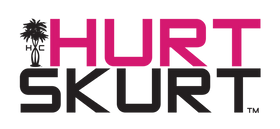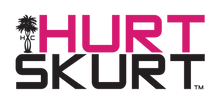Tech Neck & Stiff Neck Relief: Hot/Cold Therapy That Stays Put While You Work
If your neck feels tight, sore, or burning after a day on your phone or laptop, you are not alone. “Tech neck” (also called “text neck”) is now one of the most common modern pain complaints, caused by hours of looking down at screens. 
The good news: simple posture fixes plus the right hot/cold therapy routine can dramatically reduce neck pain and stiffness at home. This guide explains what tech neck is, when to use cold therapy vs heat therapy, and how a hands-free HurtSkurt® hot/cold sleeve can act like an ice pack for injury that actually stays put while you move.
⸻
What Is Tech Neck?
“Tech neck” is the stress and strain in your neck and upper back that builds up from repeatedly looking down at phones, tablets, and laptops. Over time, this forward-head posture overloads the muscles, discs, and joints in your neck. 
Common tech neck symptoms include:
• Achy or burning pain in the back of the neck
• Stiffness turning your head
• Pain across the tops of the shoulders and upper back
• Headaches that start in the neck
• Sometimes tingling or aching into the upper back or arms
Think of your head like a bowling ball: the farther forward it tips, the heavier it becomes for your neck muscles to hold up.  Over hours every day, that added load leads to tight, overworked muscles and irritation of tissues in your neck.
⸻
Why Your Neck Hurts After Screens
A typical “tech neck” day looks like this:
• Phone down by your lap
• Laptop screen too low
• Shoulders rounded forward
• Head jutting forward toward the screen
This posture can:
• Increase pressure on the discs and joints in your neck
• Overwork the muscles in the back of your neck and shoulders
• Shorten the muscles in the front of your chest
• Reduce circulation, making muscles feel tight and sore
Studies and clinical guidance now directly connect this forward-head posture and heavy screen time with neck pain, stiffness, and headaches. 
That is the bad news. The good news: tech neck responds very well to a combination of posture changes, movement breaks, and simple hot/cold therapy.
⸻
Ice Pack or Heat for Tech Neck? When to Use Cold Therapy vs Heat Therapy
For neck pain and tech neck, both cold therapy and heat therapy have a role. The key is to use the right one at the right time.
Cold therapy for tech neck flare-ups
Cold therapy (an ice pack for injury or flare-up) is best when:
• Pain is sharp or suddenly worse
• You have a fresh strain from sleeping “funny” or a long travel day
• The area feels hot, inflamed, or very sore to touch
Cold therapy helps:
• Reduce inflammation and swelling
• Numb pain
• Slow nerve conduction so the area feels calmer 
General guidance from medical sources for ice packs on soft-tissue injuries is:
• Apply cold for about 10–20 minutes at a time
• Use a barrier (like fabric) between your skin and the pack
• Allow the skin to warm fully between sessions 
Heat therapy for tight, stiff neck muscles
Heat therapy is ideal when:
• Pain is more dull, achy, and chronic
• Muscles feel tight or knotted
• You wake up stiff or get “end of the day” tension
Heat therapy helps:
• Relax tight muscles
• Improve blood flow
• Loosen stiffness so you can stretch more comfortably 
Alternating hot and cold for tech neck
For many people with tech neck, alternating cold therapy and heat therapy works best:
• Start with cold when pain flares or after a long day at the desk
• Switch to heat once the area is less “angry” to relax lingering stiffness
• Over time, you may use heat more frequently for ongoing muscle tension
Always follow your healthcare provider’s guidance, especially if you have circulatory issues, nerve problems, or a prior neck injury.
⸻
A Simple At-Home Tech Neck Relief Routine (Using Hot/Cold Therapy That Stays Put)
Here is a practical routine you can follow at home using a HurtSkurt® hot/cold sleeve and a SkurtStrap to keep your ice pack for neck pain exactly where you need it.
Step 1: Posture reset and quick screen break
Before you reach for any ice pack or hot/cold pack:
1. Sit tall with your feet flat on the floor.
2. Gently pull your chin straight back (like making a double chin) to stack your head over your shoulders.
3. Relax your shoulders down and back.
4. Raise your phone or adjust your screen toward eye level. 
Even 60–90 seconds of posture reset can reduce the strain on your neck muscles.
Step 2: Cold therapy with hands-free compression (10–20 minutes)
For a painful tech neck flare-up, start with cold therapy:
1. Keep a HurtSkurt® sleeve stored flat in your freezer so it is always ready as a flexible ice pack for injury.
2. Slide the cold HurtSkurt® over your upper shoulder/upper arm, or fold it so the gel section rests across the back of your neck and upper traps.
3. Use a SkurtStrap to secure the sleeve around your neck and shoulders so the gel stays in contact while you sit, stand, or walk around.
4. Relax in a chair or walk gently around your house while the cold therapy works for about 10–20 minutes. 
Because HurtSkurt® is a soft, stretchy sleeve, it provides light compression plus cold therapy without you having to hold a hard ice pack in place the entire time.
Step 3: Gentle mobility and stretching
Once the area has warmed back up naturally, add gentle movement:
• Slow nodding “yes” and “no” within a comfortable range
• Ear-to-shoulder side bends (don’t force it)
• Shoulder rolls backward
• Chest-opening stretches (hands behind back or doorway stretch) 
Avoid aggressive stretching or quick movements, especially if your neck is still very painful.
Step 4: Heat therapy for stiffness (10–20 minutes)
Later in the day—especially if you deal with chronic stiffness—switch to heat therapy:
1. Warm your HurtSkurt® according to the product’s instructions to use it as a hot/cold pack.
2. Place the warm sleeve across the back of your neck and upper shoulders.
3. Secure it with the SkurtStrap so the heat stays where your muscles are most tight.
4. Relax for 10–20 minutes while working at your desk, reading, or watching TV. 
Many people prefer cold therapy earlier in the day when pain flares and heat therapy in the evening to unwind tight muscles.
⸻
Why HurtSkurt® Works So Well for Tech Neck Relief
Traditional ice packs for neck pain can be a struggle: they slip, they are too rigid, or you have to hold them in place with one hand and stay perfectly still. That is the opposite of real-life injury recovery.
A HurtSkurt® hot/cold sleeve, paired with a SkurtStrap, is designed to make cold therapy and heat therapy actually usable while you move:
• Hands-free: The sleeve and strap keep your hot/cold pack exactly where you need it on your neck and upper back.
• Flexible fit: Soft, stretchy fabric molds around the curves of your neck, shoulder, and upper back instead of digging into your skin.
• Cold therapy that stays cold: Our gel maintains effective cold therapy while you work at your desk or move through your home routine.
• Heat therapy that feels like a warm hug: When warmed, HurtSkurt® becomes a soothing, reusable hot/cold pack that wraps you in gentle compression.
• From neck to shoulders, one product: You can position the sleeve higher for upper neck pain or lower across the shoulder blades depending on where your tech neck shows up.
If you are searching online for “tech neck relief,” “ice pack for neck pain,” “hot cold pack for neck,” or “cold therapy for neck pain,” you want something that actually stays put. That is exactly where HurtSkurt® shines for at-home injury recovery.
⸻
Daily Habits to Prevent Tech Neck in the First Place
Hot/cold therapy is powerful, but the real win is preventing tech neck from building up each day. Try these habits:
1. Bring screens up to you
• Raise your phone closer to eye level.
• Use a laptop stand or extra books to elevate your screen.
• Keep your eyes roughly level with the top third of the display. 
2. Follow a “20–20” movement rule
Every 20–30 minutes:
• Stand up
• Gently roll your shoulders
• Reset your posture
• Do two or three neck range-of-motion moves
Short, frequent breaks help more than one long stretch at the end of the day. 
3. Strengthen your upper back and posture muscles
Exercises that help fight tech neck include:
• Chin tucks
• Prone (“tummy time”) exercises for adults
• Shoulder blade squeezes
• Light resistance band rows 
These help balance out the forward pull of screens.
4. Sleep in a neck-friendly position
• Use a pillow that keeps your neck in line with your spine
• Avoid stacking multiple tall pillows under your head
• Try sleeping on your back or side instead of your stomach
Good sleep posture reduces overnight stress on neck joints and muscles. 
⸻
When Tech Neck Pain Means You Should See a Doctor
Tech neck is usually a posture-driven muscle and soft-tissue issue you can manage at home with posture changes, movement, and smart hot/cold therapy. However, you should seek professional evaluation if you notice:
• Pain that does not improve after a week of self-care
• Increasing weakness in your arms or hands
• Numbness, tingling, or burning down one or both arms
• Severe headaches or visual changes
• History of trauma (like a car accident or fall) preceding your neck pain 
A medical professional can rule out more serious conditions and guide you on physical therapy, imaging, or other treatments if needed.
⸻
Bringing It All Together: Tech Neck Relief with Hot/Cold Therapy That Stays Put
If your neck and shoulders are paying the price for your screen time, you do not have to live with the pain:
• Use cold therapy with a flexible ice pack for injury (like a frozen HurtSkurt® sleeve) when pain flares.
• Use heat therapy with the same hot/cold pack to loosen stiff muscles later in the day.
• Make posture resets, movement breaks, and simple strengthening part of your routine.
With a HurtSkurt® hot/cold sleeve and SkurtStrap, you get hands-free, stay-put hot/cold compression for tech neck relief that actually fits real life—so you can work, scroll, parent, game, or study while giving your neck the recovery time it deserves.


Leave a comment